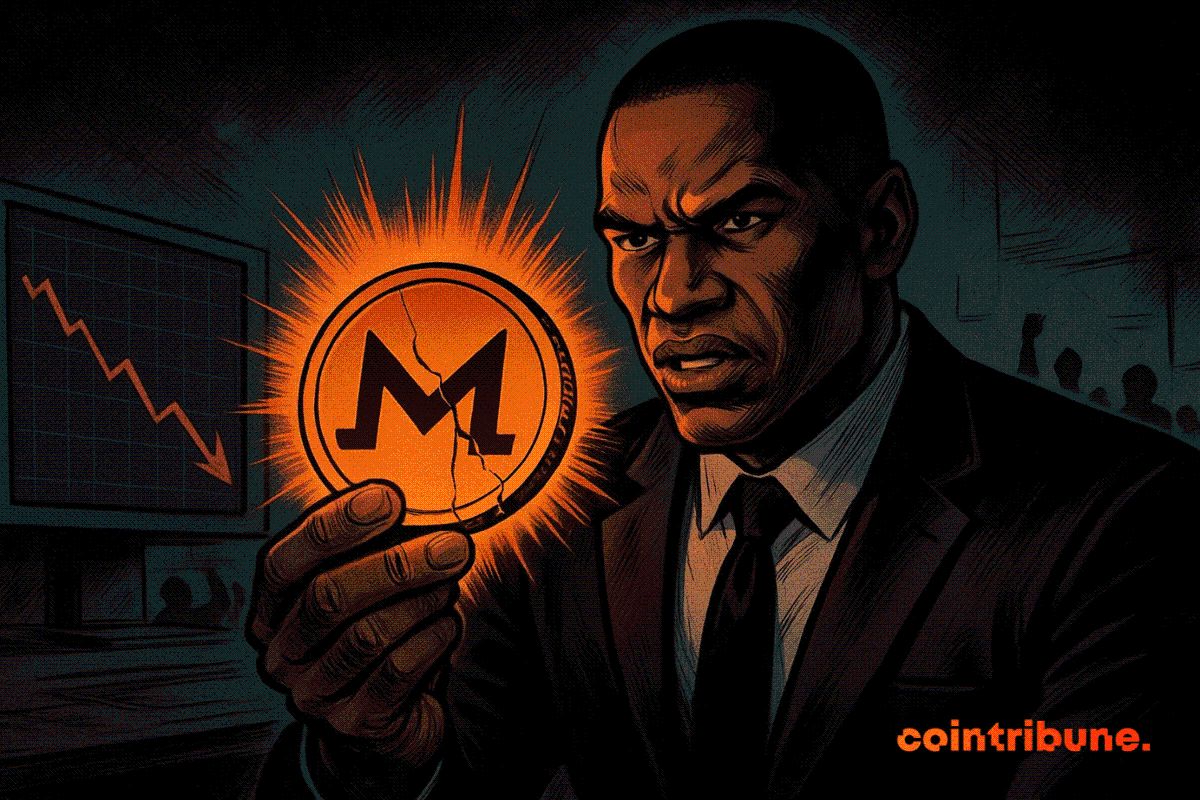BMNR's ETH Holdings: Navigating Legal Regimes to Shape Transparency and Investor Trust in the Crypto Era
- Bitmine Immersion (BMNR) holds $6.6B in ETH, leveraging Delaware's flexible common law and Quebec's civil law transparency for governance. - Delaware's self-reported disclosures create opacity risks, while Quebec's ARLPE mandates real-time UBO registration via REQ for institutional trust. - BMNR adopts Quebec's AMF audit requirements for ETH holdings, aligning with ESG standards and attracting $280M in 2025 Canadian pension investments. - The hybrid model balances Delaware's capital-raising agility with
In the rapidly evolving landscape of institutional crypto investing, Bitmine Immersion Technologies (BMNR) has emerged as a pivotal player, holding 1.52 million ETH ($6.612 billion) as of August 2025—the largest Ethereum treasury globally. Yet, the company's strategic positioning is not solely defined by its asset size but by its deliberate navigation of divergent legal regimes: Delaware's common law flexibility and Quebec's civil law transparency. This hybrid governance model offers critical insights into how regulatory frameworks shape corporate disclosures, risk management, and investor confidence in blockchain-related assets.
The Delaware-Quebec Dilemma: Common Law vs. Civil Law Transparency
Delaware, long a corporate haven for its business-friendly statutes, operates under a common law system that prioritizes judicial precedent and self-reported disclosures. While this fosters agility in capital-raising (e.g., Rule 415 offerings), it introduces information asymmetry. For instance, Delaware's lack of real-time beneficial ownership (UBO) registration creates a “black box” for investors, who must rely on unverified self-disclosure. This opacity was starkly illustrated in the 2019 collapse of Burford Capital (BTBT), where opaque governance led to a 50% single-day stock plunge.
In contrast, Quebec's civil law system, rooted in the Napoleonic Code, enforces codified transparency through the Act Respecting the Legal Publicity of Enterprises (ARLPE) and Bill 78. These laws mandate public registration of UBOs, including names, birth dates, and control percentages, accessible via the Registre des entreprises du Québec (REQ). For BMNR, this means real-time visibility into its ownership structure, a critical factor for institutional investors wary of greenwashing or misrepresentation in energy-intensive crypto operations.
Legal Liability and Investor Trust: A 2025 Perspective
The enforceable nature of civil law transparency directly impacts investor confidence. Quebec's Autorité des Marchés Financiers (AMF) encourages third-party audits of crypto assets, a practice BMNR has adopted to validate its ETH holdings. This aligns with institutional-grade ESG metrics, attracting capital like the Canada Pension Plan's $280 million commitment to Ethereum-focused ventures in 2025.
Conversely, Delaware's common law framework, while flexible, demands external verification to mitigate risks. BMNR's $252 million in 2025 private placements, for example, required third-party audits to reassure investors. This duality—leveraging Delaware's capital-raising speed while adopting Quebec's transparency—has become BMNR's regulatory blueprint.
Strategic Governance: Balancing Innovation and Accountability
BMNR's governance strategy reflects this balance. By engaging Ethereum Tower LLC for a 10-year consulting agreement and securing board seats for figures like Ethereum co-founder Joseph Lubin, the company signals institutional-grade oversight. Its use of a bankruptcy-remote subsidiary for asset custody further underscores risk mitigation, though it adds complexity to corporate governance.
However, challenges persist. The reliance on self-reported Delaware disclosures necessitates continuous third-party verification, while long-term consulting agreements (e.g., with Ethereum Tower LLC) introduce financial inflexibility. For investors, these factors highlight the importance of jurisdictional due diligence.
Investment Implications: Prioritizing Civil Law Transparency
For institutional investors, the lesson is clear: prioritize firms operating under civil law transparency standards. Quebec-registered entities, for instance, offer lower operational risks and higher governance assurance compared to Delaware-based peers. BMNR's hybrid model demonstrates how firms can blend Delaware's innovation-friendly environment with Quebec's enforceable transparency to attract ESG capital and reduce cross-jurisdictional exposure.
Conclusion: The Future of Crypto Governance
As the crypto sector matures, legal regimes will increasingly define institutional trust. BMNR's strategic alignment with Quebec's civil law framework—while retaining Delaware's agility—positions it as a regulatory innovator. For investors, the takeaway is twofold: demand third-party audits for Delaware-based entities and favor firms registered with civil law regimes like the AMF. In a market where transparency is tantamount to credibility, BMNR's approach offers a roadmap for navigating the complexities of crypto asset risk management in 2025 and beyond.
Disclaimer: The content of this article solely reflects the author's opinion and does not represent the platform in any capacity. This article is not intended to serve as a reference for making investment decisions.
You may also like
Can the 40 billion bitcoin taken away by Qian Zhimin be returned to China?
Our core demand is very clear—to return the assets to their rightful owners, that is, to return them to the Chinese victims.

Bitcoin Surges but Stumbles: Will Crypto Market Recover?
In Brief Bitcoin fails to maintain its position above $93,000 and faces heavy selling pressure. Altcoins experience sharp declines, with some showing mixed performance trends. Shifts in U.S. spot Bitcoin ETF flows highlight cautious investor behavior.

Qubic and Solana: A Technical Breakthrough by Studio Avicenne
